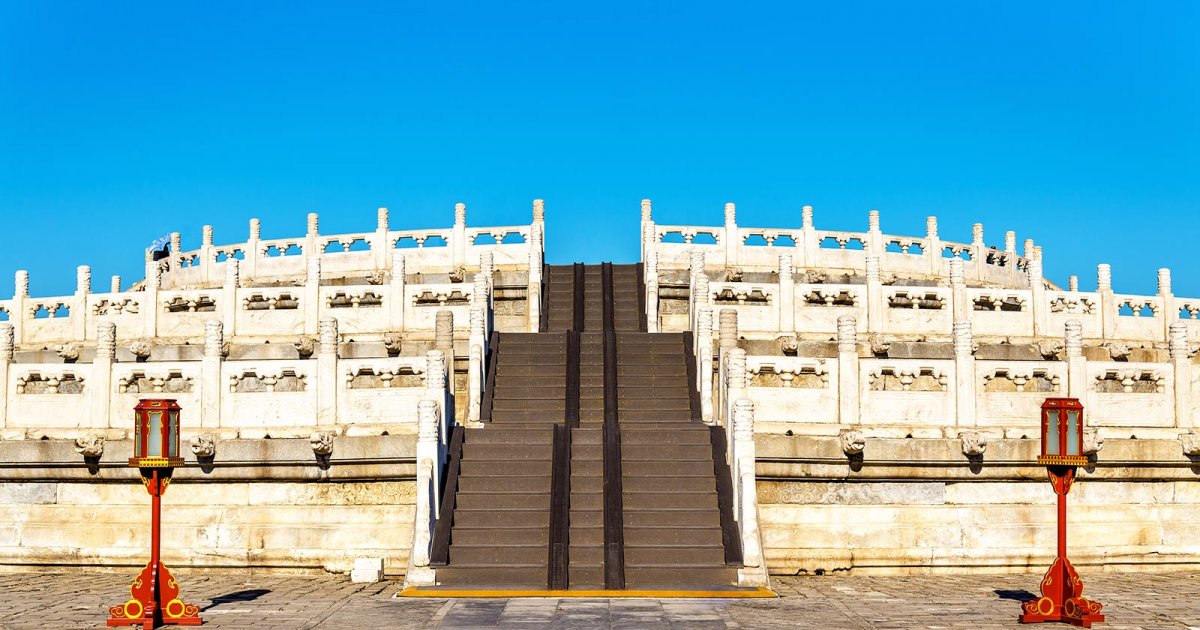TEMPLE OF HEAVEN, Circular Mound Altar Part I
 Language: English / USA
Language: English / USA
The Zhaoheng Gate takes you into a large square surrounded by a low, square wall and then by another round wall, representing heaven and earth, at the center of which you can see the Circular Mound Altar. This is the actual temple of the complex, and as you can see, it is a circular platform on three marble levels, with railings decorated with richly carved dragons.
It was built in 1530 by Emperor Jiajing of the Ming dynasty, and expanded in 1749 by Emperor Qianlong of the Qing dynasty.
The terrace was initially covered by deep blue glass tiles, surrounded by a white marble balustrade. It has a circumference of 534 meters, and is just over 5 meters high.
The altar was especially used for ceremonies to invoke rain in times of drought. During the Ming and Qing dynasties, from 1368 to 1911, the emperors came here to offer animals, especially bulls, as a sacrifice to Heaven on the day of the Winter Solstice.
The architecture of the altar is entirely based on the number 9 and multiples of 9. In Chinese culture, odd numbers are positive and even numbers negative. Nine is the largest odd number, and is considered the most auspicious number of all. It also represents the Chinese dragon, which symbolizes the emperor.
If you count the pillars, you’ll see they are multiples of nine, and the walls are covered with 360 stones, 40 x 9, the number of degrees that form a circle, representing the spherical shape of the heavens.
At the center of the upper terrace, you’ll find the Heaven’s Heart Stone, which as you can see is surrounded by concentrically arranged flagstones: 9 in the first circle, then 18 and so on until the 9th circle, composed of 81 flagstones.
An interesting fact: if you go on top of the Heaven’s Heart Stone and speak, you’ll notice your voice is amplified. This effect is deliberate, and is produced because the walls and floor of the altar are so smooth that the soundwaves spread in just seven hundredths of a second to the stone balustrades, creating an echo. The reason for this was so that the prayers of the emperor and the monks could reach Heaven more easily.



